Los Angeles has a fascinating and interesting architecture with its own history. The website LA-future will share an unusual compilation of roadside architecture that will leave an ambiguous impression.
Grotesque architecture in LA
In the 1920s and 1940s, a new architectural style, mimetic and programmatic, flourished on the streets of the city of amusements. In those times, the car became extremely popular and was one of the main vehicles for traveling around the city. Buildings and new constructions started to be built to imitate the services or goods that they sold. It was a new type of advertising to attract the attention of the car driver.
Most such structures have been replaced over time, but some fantastical architectural objects have remained the same.
Tail O’ the Pup
The first thing the reader can notice in this photo is a hot dog stand opened back in 1946. By 1980, it was relocated to another street, where people would buy delicious fast food until the 2000s.
Subsequently, the glory days of Tail O’ the Pup came to an end. It was closed in a warehouse in Torrance, after which the landmark was sent for restoration in Las Vegas. In 2017, Jay and Nicole Miller (owners of the iconic kiosk) presented it to Tommy Gelinas to display the stand in the museum. This is one of the exhibits of popular California roadside kitsch of the mid-20th century.
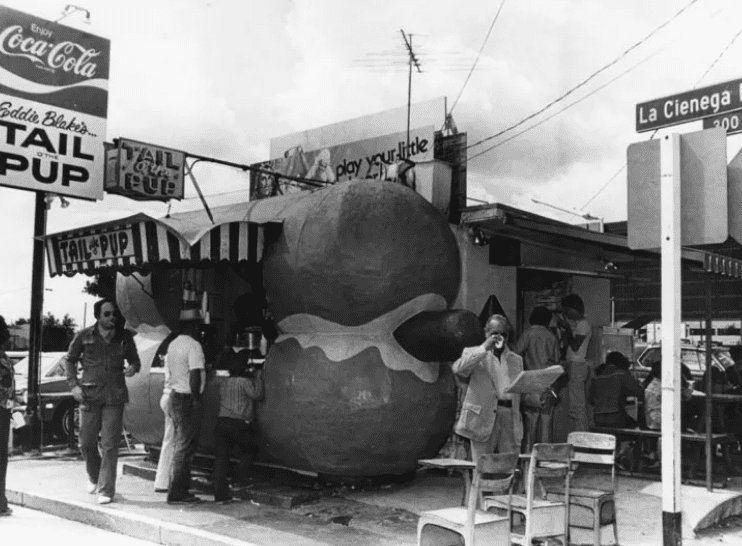
Chili Bowl
The first Chili Bowl restaurant opened on Crenshaw Boulevard in 1931. A few years later, the chain expanded to 23 restaurants, all of which were designed in the circular shape of a chili bowl. The founder of the business, Arthur Whizin, told how he came up with this idea. While discussing the design of the future restaurant with his friend, he still had some questions that remained unanswered. Then his friend pointed at the chili bowl and advised him to do something about it. Whizin took his advice and, filled with inspiration, drew up an outline on his overalls, eventually fulfilling this plan.
Bizarre-shaped restaurants began to open all across Southern California. Interestingly, such a design saved the Chili Bowl during the devastating earthquake of 1933. Visitors first ran outside but then continued eating their tasty meal as if nothing had happened. After World War II, the owner closed the establishments, and only four restaurants remained until now.
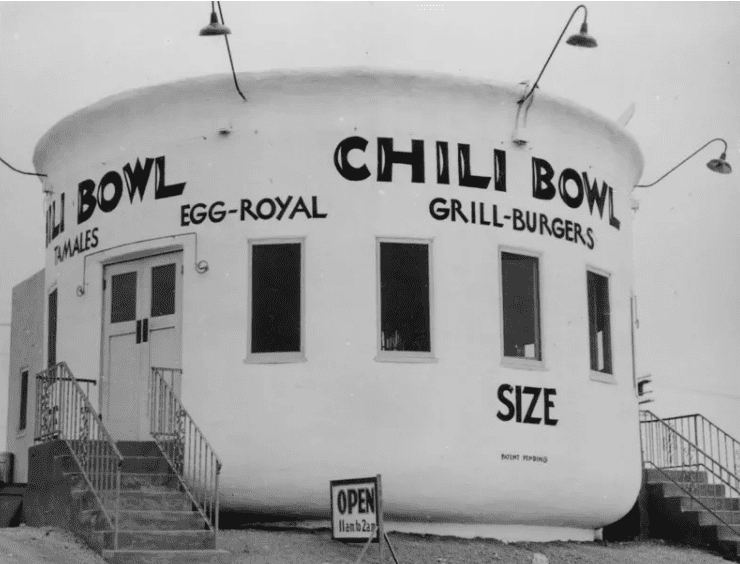
Bulldog Cafe – the last barrel-building in LA
In 1941, an unusual barrel-shaped structure built by engineer George F. Fordyk appeared in Los Angeles. The commissioner was Universal Studios’ representative Michael D. Connolly. After successfully completing the work, the Connolly spouses opened a bar with a cafe on the first floor, while on the second floor, they used it as a residence. After the divorce, Irene Connolly received all the property. In 1971, she decided to quit the business and sold the building to Jose and Dolores Fernandez.
However, the story continued, and the barrel building was owned again by another couple who opened the La Gana Flameno cafe there, which was closed in 1983. For many years, the quaint structure remained unoccupied until the 1933 Group purchased it. In 2015, the barrel cafe was renovated and transformed into the Idle Hour bar. Nowadays, visitors can admire an interesting replica of the Bulldog Cafe placed in the backyard. This well-known landmark of the Valley still attracts tourists and locals.
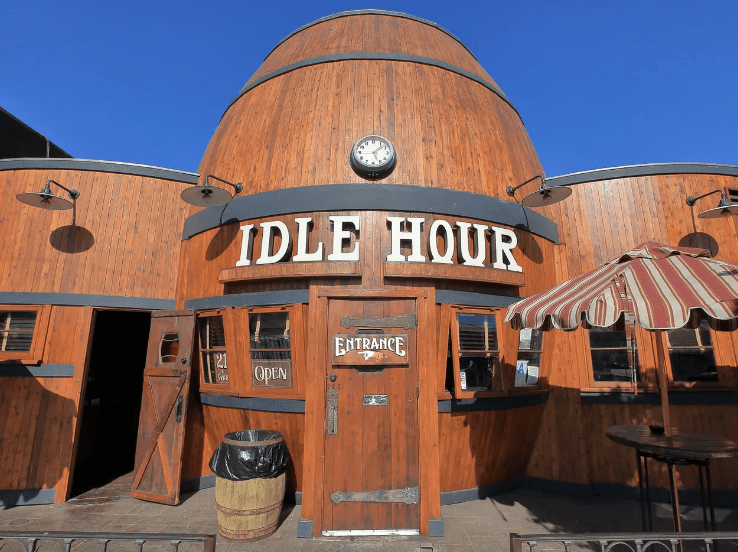
Mother Goose Pantry
This is another noteworthy example of whimsical roadside architecture. The history of the pantry in the form of a huge shoe is no less fascinating. The story goes that in 1929 a woman opened a diner in her own house in Pasadena. She had so many children that she literally did not know how to cope with them. Thus, she decided to open a catering establishment, but it did not last. Later, the shoe was demolished.
The restaurant worked until 1955 (in some sources until 1959). The building had two floors where visitors tried delicious food. People were attracted by the odd shape of the diner, made in the style of the old fairy tale about Mother Goose, “There Was an Old Woman Who Lived in a Shoe”. The building was made in roadside vernacular architecture, which was quite popular in the mid-20th century.
After the restaurant closed, the building for a while was used as a motorcycle shop.

The Jail Cafe
It was opened by H. N. Denny in 1925. According to the advertisement, it was one of the most unique restaurants in America offering the best cooking compared to other establishments. However, such a promo did not coincide with the very concept of the venue because it looked like an old prison. Guests had their meals in cells with bars, and waiters served them in the uniform of convicts. Inside, there was a cozy fireplace. The whole building was designed by the architect A.F. Leicht.
The establishment looked very realistic. When, in 1926, real mobsters attacked the restaurant, visitors were convinced that it was part of an entertainment program. But it did not last long and soon became obvious, as bandits started searching through clothes and taking valuables.
The owners dreamed of creating a chain of such unique jail cafes, but this dream was never going to come true. The restaurant was later closed and converted into a respectable bar El Cid, which has been operating in the building since then.
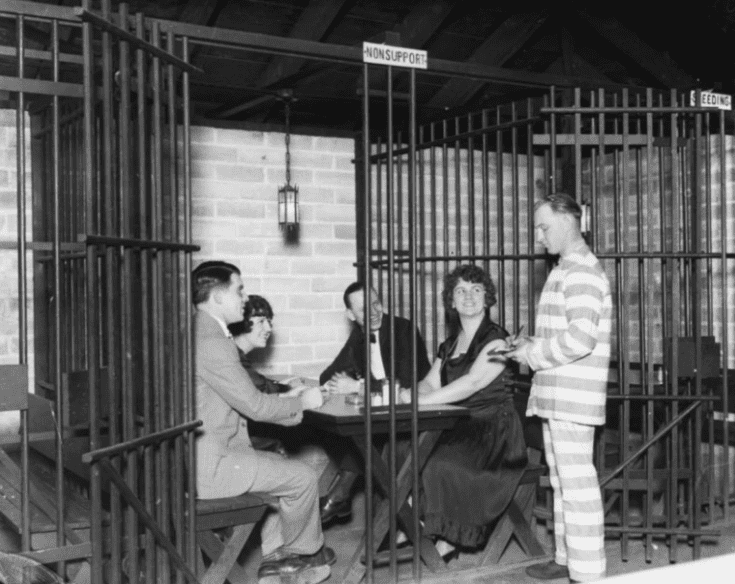
The Hollywood Flower Pot
This is a pretty interesting building, which is located in the central part of Hollywood. It was built in 1930. Every car driver passing by knew it was a florist shop. Jim Heyman, a writer and historian, told that the family of the future owners moved to Hollywood during the Great Depression. They found the building and turned it into a one-room residence, but it did not last long. Over time, the Hollywood Flower Pot was demolished.
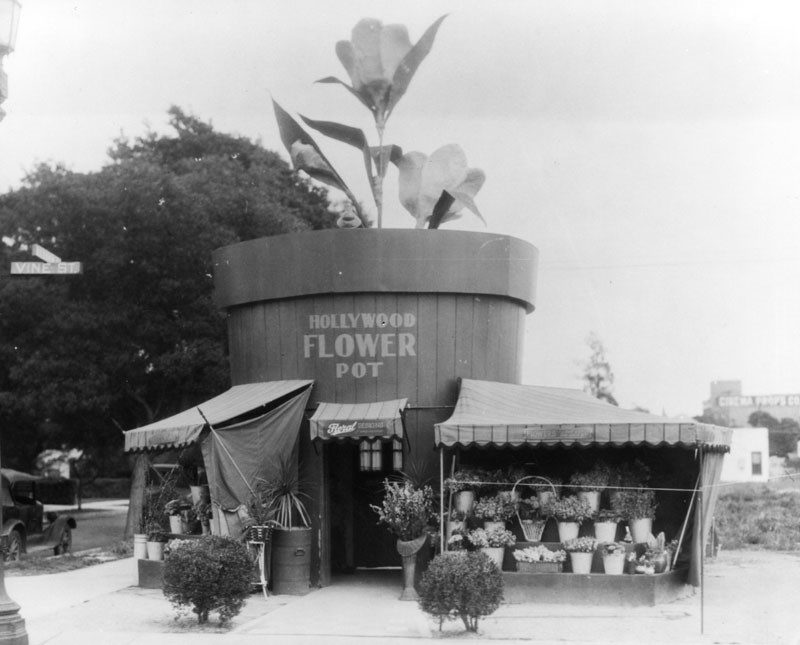
California Piano Supply Co.
In 1927, Dr. Ashley Manning, a chiropractor, opened this company. Three years later, he decided to put a gigantic red piano, measuring over 12 meters high, in front of his shop. This advertising amazed and thus attracted new visitors. The New Yorker magazine even described this building as:
“Evidence of Southern California’s special brand of madness.”
Nevertheless, it was a significant advantage for business as well. In 1966, Manning sold the establishment to another music company. The piano even survived a fire in 1972. The owners tried to preserve the architectural monument but to no avail. Tom Sewell, the pop architecture fancier, managed to arrange for the large piano to be transported west to Venice, California. While trying to lower the piano onto a specially mounted concrete base, the monument broke down into pieces. Unfortunately, this architectural zest was lost.
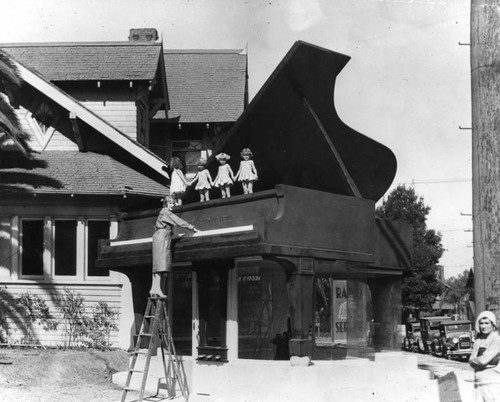
The Donut Hole
It would be appropriate to finish this compilation with the Donut Hole attraction. In 1968, two giant donuts were built through which visitors could drive and make orders. Since then, it has been a place where one can buy tasty donuts.
Customers can drive through the center of the donut construction and pick up their orders. This is a great example of effective advertising that pleases the eye of those passing by. It is worth adding that the Donut Hole is the second of the five establishments and the only place where donuts can be bought. This unique architectural object was featured in many films.
Noteworthy architecture in Los Angeles
This kind of roadside architecture had its heyday in the 1930s in Southern California. At the time, critics did not accept this style. That is why most of the buildings were destroyed. Over the years, modern citizens and tourists became interested in these quaint constructions and their history. It is hardly possible to describe them all, but this list will help you understand the trends of those days and become a part of them, even for a little while.


